What's New
Displaying results 3731 - 3740 of 4052
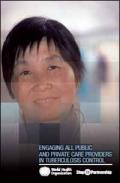
Resource | Fact Sheets,
Whilst access to treatment for tuberculosis (TB) has increased dramatically in the last ten years, not everyone has the same standard of care opportunities. Every day, thousands of TB patients are exposed to low-quality TB care. This not only causes unnecessary suffering and death, often with high costs for patients, but also damages the reputation of health facilities and health staff.
PPM encompasses diverse strategies such as Public-Private, Public-Public or Private-Private Mix that enable developing partnerships for delivery of TB care in national and local efforts to control TB. This benefi ts all the sick patient, the community, the health care provider, the TB programme, and ultimately, the health of the whole nation.

Resource | Publications,
Hong Kong locates in Asia, the new burning place of HIV infection, but still enjoying a low-prevalence of HIV infection. While sexual transmission was the predominant route of transmission in Hong Kong, an outbreak in injecting drug users was worried as taking reference from the experience in other Asian areas. Various public health measures have kept the prevalence of drug users at exceptional low level, as comparing with our neighbouring cities. This year, an increasing trend was detected in Men who have Sex with Men (MSM) in Hong Kong. The report analysed the attributes of the increase of HIV infections in MSM observed. A HIV-1 Subtype B cluster of similar gene sequencing affecting 20 individuals, mostly MSM, was firstly detected in Hong Kong. It signified the increased risk of local transmission of HIV among MSM.

Resource | Presentations,
The objectives of this presentation are to raise AIDS awareness among MSM, increase safer sexual behaviors among MSM and their sexual partners and increase access to “MSM-friendly” services for STI, VCT and HIV care and treatment.

Resource | Data Sheets,
Tables on the Matrix of the National Action Plan for HIV/AIDS and STI in Lao PDR for 5 year (2006 –2010)

Resource | Presentations,
Slides on Integration of VCCT Services into Sexual Reproductive Health Clinics. Presented by Dr. Ping Chutema, Director of Clinical Services, RHAC.
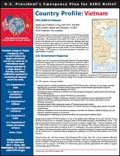
Resource | Fact Sheets,
HIV prevalence data in Vietnam is based primarily on HIV/AIDS case reporting and on the HIV Sentinel Surveillance conducted annually in 40 of Vietnam’s 64 provinces. The government now reports HIV cases in all provinces, 93 percent of all districts, and 49 percent of all communes, although many high prevalence provinces report cases in 100 percent of communes. Even though Vietnam has implemented HIV/AIDS case reporting, the general lack of HIV testing thus far suggests that the actual number of HIV infected persons is much higher. HIV prevalence in the general population is estimated to be approximately 0.4 percent.
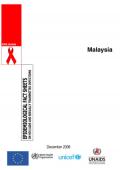
Resource | Fact Sheets,
The estimates and data provided in the following tables relate to 2005 unless stated otherwise. These estimates have been produced and compiled by UNAIDS/WHO.
They have been shared with national AIDS programmes for review and comments, but are not necessarily the official estimates used by national governments. In order to calculate regional totals, older data or regional models were used to produce minimum estimates for these countries. The estimates are given in rounded numbers. However, unrounded numbers were used in the calculation of rates and regional totals, so there may be minor discrepancies between the regional/global totals and the sum of the country figures.
The new estimates in this report are presented together with ranges, called 'plausibility bounds'. These bounds reflect the certainty associated with each of the estimates. The wider the bounds, the greater the uncertainty surrounding an estimate. The extent of uncertainty depends mainly on the type of epidemic, and the quality, coverage and consistency of a country's surveillance system.
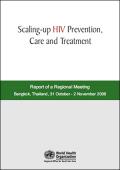
Resource | Publications,
The HIV epidemic in the South-East Asia Region is a source of growing concern. An estimated 7.2 million people were living with HIV/AIDS at the end of 2006. Of these, 1.9 million were younger than 25 years of age, including 120,000 children. South-East Asia bears the second highest number of HIV-infected persons among all WHO Regions, behind sub-Saharan Africa.
The meeting brought together senior representatives from the Ministry of Health, programme managers from national AIDS programmes as well as from reproductive health and adolescent health programmes, representatives from nongovernmental organizations (NGOs) and development partners to exchange information and provide a platform for technical and strategic discussions on scaling-up HIV prevention, care and treatment interventions.
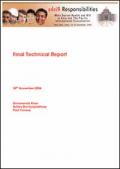
Resource | Publications,
Despite evidence establishing male-to-male sex as one of the driving forces of HIV transmission in the Asia and Pacific region, few strategic interventions address male-to-male and transgender sexualities and related HIV vulnerabilities.
In recognition of the need for building and strengthening interventions addressing HIV related vulnerabilities of males who have sex with males (MSM) in the Region; the Male Sexual Health and HIV in Asia and the Pacific - International Consultation was organised in New Delhi, India from September 23-26, 2006, with the tagline “Risks and Responsibilities.”
This regional consultation provided a space for dialogue, learning, networking, and skills building, towards enabling the expansion, strengthening and scaling up of strategies addressing sexual health and related HIV vulnerabilities in relation to males who have sex with males and transgender people. In addition, the consultation provided an opportunity to inform and develop strategic advocacy initiatives and deliberate on key policies related to these issues.
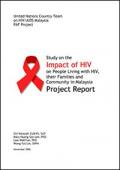
Resource | Publications,
The main objective of this project is to strengthen the national policy and programmes on HIV/AIDS in Malaysia by assessing the impact of HIV/AIDS on people infected by the disease to provide an information base on PLHIV (People Living with HIV) and the families/communities affected.





